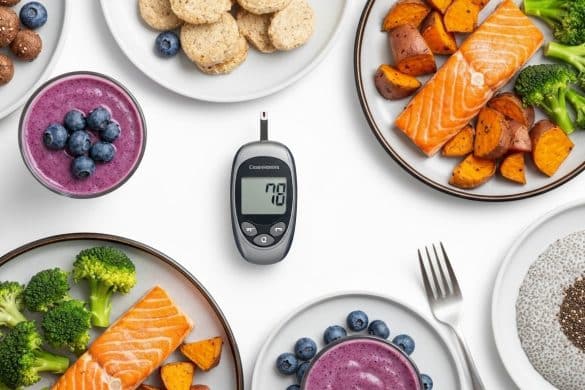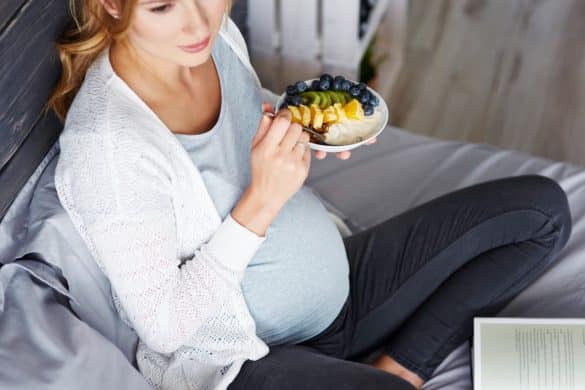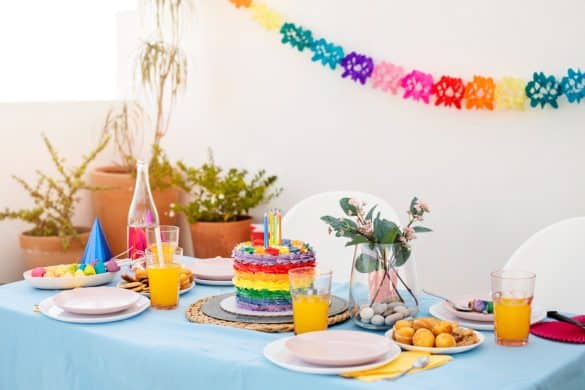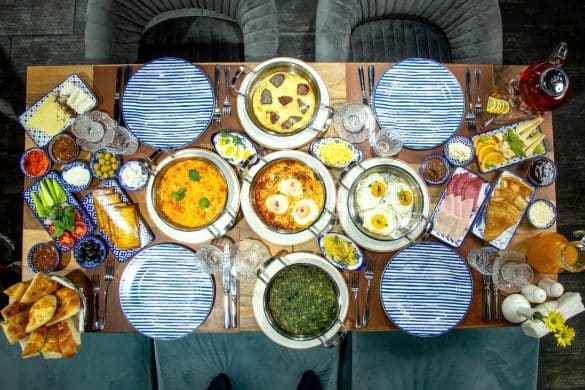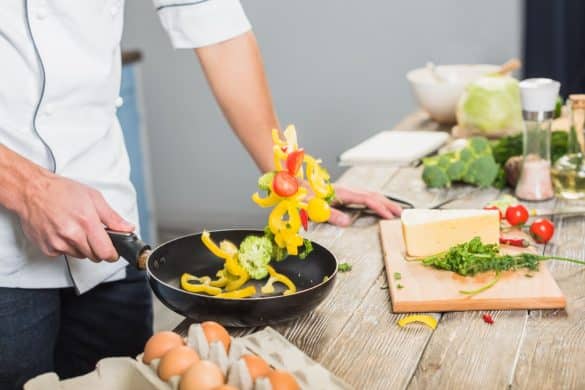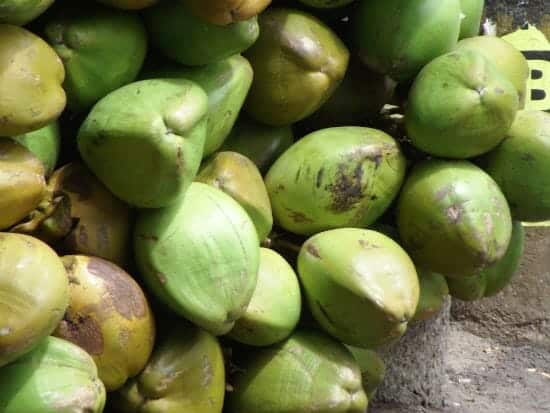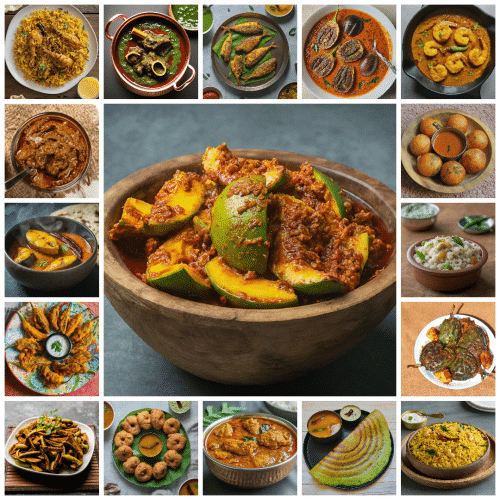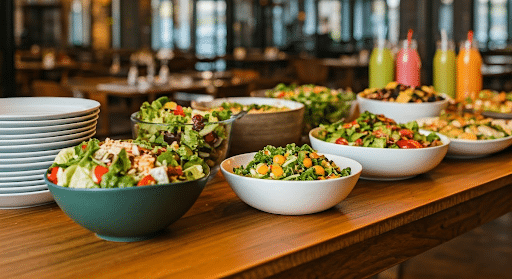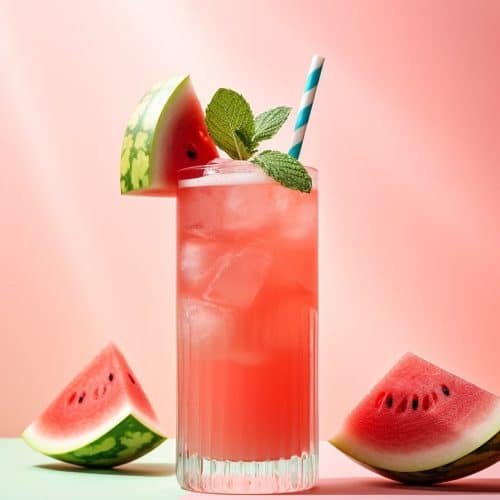Pressure cooking is a quick and efficient way to prepare meals that can save both time and effort. Whether you’re using a new pressure cooker or your first pressure cooker, this guide will help you master the essentials of cooking with it.
From learning about how to use a pressure cooker and its basic functions to explore how the best pressure cooker can change your cooking routine, we’ve got it all covered. We’ll guide you on how to choose the right pressure cooker for you—be it a stovetop model or an instant pot duo. Plus, we’ll provide essential cleaning tips and help you troubleshoot common issues like food sticking to the pot or pressure not building up. Let’s embark on this journey to making pressure cooking a breeze!
Why use a pressure cooker?
So why use a pressure cooker? The major advantage of using a pressure cooker is the quick release and natural release of steam, which allows you to cook meals in much less time compared to traditional methods.
For instance, cooking rice typically takes 20-30 minutes on a stove, but in a pressure cooker, it can be done in just 10 minutes with only a cup of water. This is ideal for busy households, allowing you to cook nutritious meals with little effort. Moreover, since pressure cooking preserves most of the vitamins and minerals in the food, it’s a healthier cooking method. Whether you are preparing a cup of water of beans or a large pot of curry, the pressure cooker helps lock in the flavours.
How Pressure Cookers Work?
In a pressure cooker, steam builds up inside the pot, creating full pressure. This increased pressure allows the boiling point of water to rise above 100°C, so food cooks faster.
The cooker works by trapping steam inside, which raises the internal temperature and cooks food quicker than regular methods. Once the cooking is done, you can use the quick-release method to release the pressure immediately or let the cooker cool naturally for a natural release.
Both methods allow the cooker to safely release steam and allow the pressure to decrease. Knowing how to release pressure correctly is crucial, as it prevents overcooking or burning food.
What Are the Principles of Pressure Cooking?
The principles of pressure cooking revolve around the concept of steam pressure. As the sealed cooker traps the steam produced from boiling liquid, a high-pressure environment is created within the pot. This pressure significantly raises the boiling point of water, making the molecules in the food move faster, thus reducing cooking time. Moreover, the hot steam not only cooks food but also helps to tenderise meat by breaking down its fibres, resulting in a soft and succulent texture.
What Are the Types of Pressure Cookers?
There are several types of pressure cookers available in the market, each suitable for different cooking needs:
- Stovetop Pressure Cookers: Traditional type that needs a separate heat source like a gas or electric stove.
- Electric Pressure Cookers: Self-contained units with built-in heating elements, offering multiple functions beyond pressure cooking, such as slow cooking and sautéing.
- Microwave Pressure Cookers: Designed for microwave use, they are compact and ideal for small meals or side dishes.
Each type of pressure cooker has its strengths and weaknesses. It’s essential to choose one based on your specific cooking habits and requirements.
What Are the Key Components of a Pressure Cooker?
A pressure cooker has three main components: the cooking pot (usually stainless steel or aluminum), the lid with a sealing ring for a tight seal, and the pressure release valve to regulate internal pressure. Together, these parts ensure safe, efficient cooking for a variety of dishes. In the following sections, we’ll explore how each component contributes to the pressure cooking process.
Lid and Sealing Ring
The lid of a pressure cooker plays a vital role in creating the necessary pressure inside the cooker. The rubber gasket or sealing ring ensures the lid is tightly secured, trapping steam and maintaining the pressure. This is important for achieving the correct cooking temperature and cooking time. If the lid or the gasket is damaged or not fitted properly, the cooker may not work efficiently. When using a new pressure cooker or even an older one, always check that the lid is sealed properly to avoid any accidents.
Pressure Release Valve
The pressure release valve controls the amount of pressure inside the cooker. It prevents the cooker from over-pressurising by releasing steam when it reaches a certain level. There are two types of pressure release methods: quick release and natural release. Quick release is used for delicate foods like vegetables or seafood, while natural release is preferred for meats or stews, allowing the food to settle and become more tender. Learning how and when to use these methods is key to mastering how to use a pressure cooker effectively.
Cooking Pot
The cooking pot inside the pressure cooker holds the food and liquid while it cooks. It’s important to ensure you use the correct amount of liquid, generally about 1 to 1.5 cups, to generate the necessary steam for pressure cooking. You should avoid filling the cooker more than two-thirds of its capacity to allow room for expansion and pressure buildup. If you’re cooking large meals, make sure you use the appropriate size cooker for the quantity of food. A cup of water or broth is often sufficient, but the exact amount may vary based on the recipe.
How to Prepare for Pressure Cooking?
Preparing for pressure cooking is crucial for ensuring safety and smooth cooking. We will cover key aspects like understanding the importance of reading your pressure cooker’s manual to familiarize yourself with its features and functions. We’ll also discuss how to check your cooker kit, including inspecting the sealing ring pressure release valve and making sure the cooker is in good condition. Proper preparation will help you cook with ease and avoid any issues during the process.
Reading the Instructions
Before using your pressure cooker, especially if it’s your first time, it’s essential to read the user manual. The instructions will guide you on how to assemble and use your specific model. Understanding how your cooker works, its different features, and the safety precautions will make cooking much easier. You’ll also find helpful tips on how much water to use and the amount of time needed for different dishes. For beginners, the manual often includes simple recipes to try next time!
Checking Your Kit
Before you start cooking, it’s important to check your pressure cooker kit. You must ensure that there are no visible cracks or damages, and that the pressure release valve and safety valve are working properly. The sealing ring should be in good condition and properly placed to create a tight seal. Also, make sure the cooking pot and lid are clean. If your cooker comes with extra accessories like trivets or steamer baskets, check that they are in good condition as well. This ensures that you’re using the right amount of pressure and water so your food turns out perfect every time!
What Are Some Cooking Techniques and Tips?
Mastering key techniques—like browning for deeper flavour, using the right amount of liquid, and avoiding overfilling—can enhance your pressure cooking. We’ll also discuss the two pressure release methods, natural and quick, and when to use them for different dishes. Follow these tips for perfect results every time.
Browning Food in the Cooker
To bring out the best flavours in your food, try browning or sautéing the ingredients before pressure cooking. This step is particularly useful for meats like chicken or beef, as it adds a rich, caramelised taste through the Maillard reaction. Simply set your pressure cooker to low pressure and brown the food directly in the pot. Once browned, add the required liquid and then cook under full pressure. This technique not only improves the flavour but also saves you time.
Liquid Requirements
For your pressure cooker to work properly, it needs enough liquid to generate steam and build up pressure. Generally, a minimum of one cup of water is required. However, dishes like beans or soups may need more liquid. If you don’t add enough water, the cooker won’t reach full pressure, and the food won’t cook properly. Also, avoid overfilling the cooker; about two-thirds full is ideal. This ensures enough space for the food to expand and steam to circulate effectively, ensuring even cooking.
Do’s and Don’ts
- Do ensure there’s enough liquid in the cooker, usually 1 to 1.5 cups.
- Don’t overfill the cooker; this can cause pressure issues and uneven cooking.
- Do allow the cooker to naturally release pressure, especially when cooking meats and stews, to get tender results.
- Don’t open the lid until all pressure has been released. Use cold water or the quick-release method as needed for a safe and easy cooking process.
Beginner Friendly Recipes
For beginners using a pressure cooker, it’s best to start with simple, fuss-free dishes like soups, stews, dal, and rice, which are perfect for cooking on a regular basis. Recipes like chicken soup, vegetable risotto, and dal are easy to make, quick to cook and give great results. Dishes like chicken stock, beef stew, and apple sauce require minimal effort and allow room for experimentation. These recipes, with their short cook times, will help you become comfortable and confident with your pressure cooker.
How to Choose the Right Pressure Cooker for You?
When picking a pressure cooker, it’s important to consider two main factors: size and material. In this section, we’ll guide you on how to choose the right size based on your family’s needs and cooking habits. We’ll also explain the material options, like stainless steel and aluminium, to help you make an informed decision. Let’s look at these factors in detail to help you choose the best pressure cooker for your kitchen.
Size Considerations
The size of your pressure cooker depends on how much food you cook. If you have a small family, a 3-litre or 5-litre cooker will be enough. If you cook larger meals or for a bigger family, you might need a 6-litre or 8-litre cooker. For those who cook in bulk or make large batches of food, a bigger cooker like a pressure canner would be more suitable. But for daily meals, a smaller 3-litre or 5-litre cooker will work perfectly.
Material Options
Pressure cookers are made from two main materials: stainless steel and aluminium. Aluminium cookers heat up quickly and are lighter, but they may wear out faster. Stainless steel cookers, on the other hand, are more durable, long-lasting, and easier to clean. If you are buying an Instant Pot Duo, it’s important to check if it has a stainless steel inner pot because it prevents food from sticking and lasts longer. Overall, stainless steel is the better option if you want a cooker that lasts longer and gives better cooking results.
With the right size and material, you will know exactly how to use a pressure cooker to suit your cooking needs and get the best results.
What Are the Best Practices for Cleaning and Maintaining a Pressure Cooker?
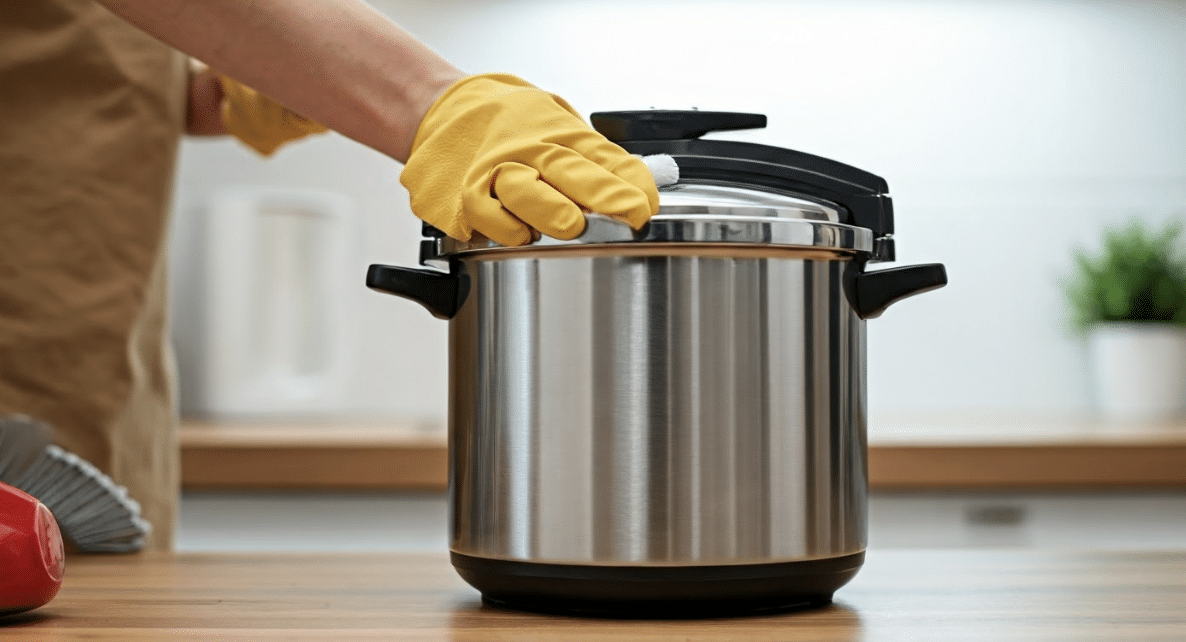
Cleaning techniques for pressure cooker
To keep your pressure cooker in good working condition for years, regular cleaning and care are essential. In this section, we will discuss simple steps for cleaning your cooker, including the pot, lid, and sealing ring. We will also share tips on how to store your pressure cooker properly so it stays in top shape. These easy-to-follow practices will help you maintain your pressure cooker and ensure it works well every time.
Proper Cleaning Techniques
Cleaning your pressure cooker is simple. After each use, wash the cooking pot and lid. Most pots are dishwasher-safe, but for the lid, it’s better to wash it by hand using warm water, a soft cloth, and mild soap. Pay attention to the sealing ring, pressure release valve, and other small parts, as food can get stuck there. You can use a small brush or toothpick to clean these areas. Once washed, dry all parts properly to avoid any moisture that could cause rust or mould.
Storing Your Pressure Cooker
Storing your pressure cooker properly is just as important as cleaning it. Once the cooker is clean and dry, store it in a cool, dry place away from heat and moisture. If possible, store the lid upside down or separately so air can circulate and prevent any bad smell. Always remove the gasket before storing it and clean it separately. Check all parts from time to time for any signs of wear or damage.
By following these easy steps, you’ll keep your pressure cooker in top condition and enjoy cooking with it for years!
What Are the Common Pressure Cooker Issues and How to Troubleshoot Them?
While pressure cookers are designed to be reliable cooking vessels, it’s not uncommon to encounter occasional issues. Common problems include pressure not building up properly, food sticking to the pot, or the cooker taking too long to reach high pressure. Many of these issues can be resolved by checking the sealing ring, ensuring sufficient liquid in the vessel, and keeping the pressure release valve clear. By understanding these common issues and knowing how to troubleshoot them, you can extend the life of your pressure cooker and uphold its performance.
Pressure not building up
If you notice that pressure isn’t building up in your cooker, there could be several reasons. One of the most common causes is a worn or incorrectly positioned sealing ring, which can prevent the cooker from achieving a proper seal. Another reason could be insufficient liquid in the pot, as the absence of adequate steam can’t create enough pressure. Finally, a blocked pressure release valve can also hinder the build-up of pressure. Always double-check these components if you encounter this issue.
Food sticking to the cooker
Food sticking to the bottom of your pressure cooker is another common issue. This can occur when there’s insufficient liquid in the pot or when cooking at very high heat, resulting in scorching at the base. To prevent this, always ensure enough liquid is present and adjust your heat source to maintain the required pressure without overheating. In case food does stick, avoid scraping it off while cooking, as this can integrate the burnt taste into the dish. Instead, stop cooking, release pressure, and clean the pot before continuing.
Final Thoughts
Once you get the hang of using a pressure cooker, it will quickly become a must-have in your kitchen. Not only does it save time, but it also helps you prepare delicious and healthy meals. To make the most of it, it’s important to learn how to use it correctly, take care of it, and try out different cooking methods. Reading the manual, understanding the parts of the cooker, and cleaning it properly after every use are all crucial for good results. Don’t hesitate to experiment with new recipes—cooking is all about having fun and trying new things. Whether you’re just starting or already experienced in the kitchen, we hope this guide gives you the confidence to get the best out of your pressure cooker. Happy cooking!
Frequently Asked Questions
Is pressure cooking healthy?
Yes, pressure cooking is healthy. Since it cooks food much faster—up to 50% quicker than traditional methods—it helps retain more nutrients, including vitamins and minerals. This is especially true for nutrients like beta-carotene and ascorbic acid, which are often lost in longer cooking processes.
Are pressure cookers safe to use?
Modern pressure cookers are very safe. They come with safety features like pressure release valves and locking systems, which prevent the lid from opening while there’s still pressure inside. As long as you follow the manufacturer’s instructions and take necessary precautions, pressure cookers are safe to use.
Can I use a slow cooker recipe in a pressure cooker?
Yes, you can adapt slow cooker recipes for a pressure cooker. However, you’ll need to adjust the cooking time. A dish that takes about 8 hours in a slow cooker can usually be cooked in a pressure cooker in about 25-30 minutes, making it a much faster option.
How does a pressure cooker work to cook food faster than traditional methods?
A pressure cooker works by trapping steam inside a sealed pot, which creates high pressure. This increases the boiling point of liquids, allowing food to cook faster. The steam forces liquid into the food, speeding up the cooking process significantly compared to traditional methods.
Can I use a pressure cooker for different types of recipes, such as soups, stews, and desserts?
Absolutely! Pressure cookers are versatile and can be used for a variety of recipes—be it soups, stews, or even desserts. From a comforting bowl of soup to a delicious, creamy cheesecake, your pressure cooker can handle it all.

